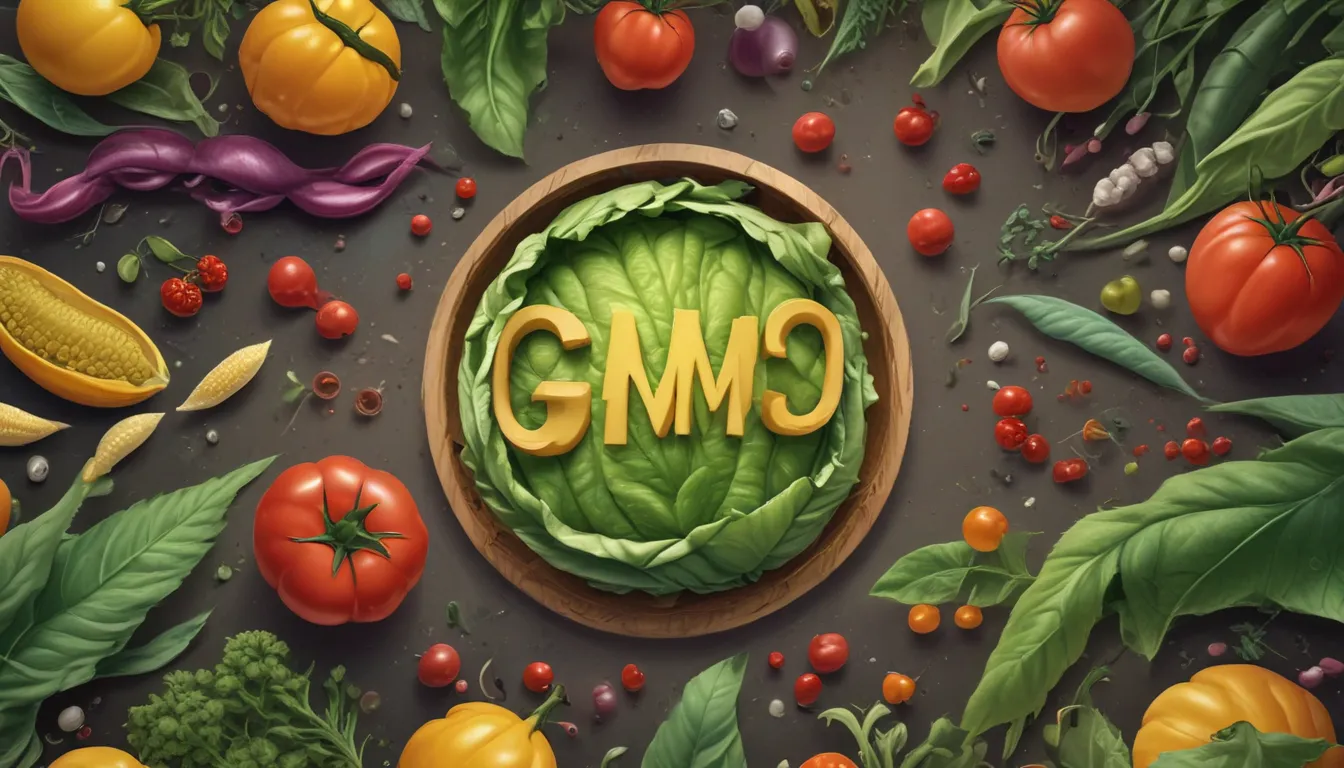A Note About Images: The images used in our articles are for illustration purposes only and may not exactly match the content. They are meant to engage readers, but the text should be relied upon for accurate information.
Welcome to the world of genetically-modified organisms, or GMOs. If you’ve ever wondered about those “non-GMO” labels at the grocery store, you’re not alone. Let’s delve into the fascinating realm of GMOs and uncover some interesting facts that might surprise you.
Unraveling GMO Facts
A Brief History of GMOs
Did you know that humans have been modifying organisms genetically for thousands of years? As early as 12,000 BC, our ancestors used selective breeding to enhance crops and livestock. The modern era of genetic engineering began with groundbreaking discoveries like the isolation of DNA by Friedrich Miescher in 1869 and the structure of DNA by Francis Crick and James Watson in 1953.
Fast forward to the 1970s, where pioneers like Paul Berg, Herbert Boyer, and Stanley Cohen made significant strides in genetic engineering. The first GM plant, an antibiotic-resistant strain of tobacco, was created in 1983. China entered the scene in 1992 with virus-resistant strains of tobacco, and the FDA approved insect-resistant GM potatoes in 1995. These milestones paved the way for the diverse world of GMOs we see today.
The Diversity of GMOs
One of the most common misconceptions about GMOs is that they are limited to food. While food crops like soybeans and corn dominate the GMO landscape, the applications of genetic engineering go beyond the realm of nutrition. From colorful GMO flowers to GM animals used in research, the possibilities are endless.
For instance, GM roses with unique colors and GM mice for disease research highlight the versatility of GMO technology. Even drugs like insulin and ATryn are now produced by GMO bacteria and goats, revolutionizing medical treatments. The development of AquAdvantage salmon, the first GM animal approved as food in 2015, showcases the potential of GMOs in addressing global food security challenges.
Golden Rice and Beyond
Golden Rice stands out as a prime example of how GMOs can address critical societal issues. Engineered to produce beta-carotene, which converts to Vitamin A in the body, Golden Rice aims to combat Vitamin A Deficiency (VAD), a leading cause of childhood mortality and blindness worldwide. With the potential to enhance the nutritional value of a staple crop like rice, Golden Rice exemplifies the power of genetic engineering for good.
From the first GMO food, the Flavr Savr tomato, to revolutionary advances like CRISPR gene editing, the landscape of GMOs continues to evolve. While controversies surrounding GMO humans and GMO insects raise ethical concerns, ongoing research seeks to unlock the full potential of genetic engineering for the benefit of humanity.
Debunking GMO Myths
Health and Safety Concerns
One prevalent myth about GMOs is their purported risks to human health. Contrary to popular belief, GMO foods undergo rigorous testing and certification processes to ensure their safety. Studies show that GMO crops are actually less likely to mutate and require fewer pesticides, benefiting both consumers and the environment.
The FDA’s stringent approval process for GMO crops and medicines underscores the commitment to safety and quality in genetic engineering. Despite delays in the distribution of beneficial products like Golden Rice, regulatory authorities prioritize thorough evaluation to address public concerns and ensure transparency in GMO regulation.
Economic and Environmental Impact
Another common misconception is that GMO crops are harmful to the environment. On the contrary, GMOs have been shown to reduce pesticide use by 8% and mitigate water consumption in agriculture. By increasing crop yields and lowering production costs, GMOs play a vital role in sustaining global food security and reducing hunger.
Far from damaging the environment, GMO crops offer a sustainable solution to agricultural challenges and promote resource efficiency. As the world grapples with climate change and food shortages, the innovative potential of GMO technology emerges as a valuable tool for addressing pressing societal needs.
The Future of GMOs: Promises and Challenges
Ethical Dilemmas and Regulatory Frameworks
The prospect of GMO humans and extinct species revival poses ethical dilemmas that demand careful consideration. While gene therapy holds promise for treating genetic diseases, the implications of heritable genetic modifications remain controversial. Balancing scientific progress with ethical boundaries requires a robust regulatory framework to guide responsible genetic engineering practices.
Conclusion
In conclusion, GMOs represent a complex and multifaceted field of study that encompasses scientific advancements, ethical considerations, and societal impact. By debunking myths and highlighting the transformative potential of genetic engineering, we gain a deeper understanding of the role GMOs play in shaping our world.
As we navigate the evolving landscape of GMO technology, let us approach the subject with curiosity, critical thinking, and a commitment to ethical stewardship. Together, we can unlock the full potential of GMOs for the betterment of humanity and the planet.
Thank you for exploring GMO facts with us. Stay informed, stay curious, and continue to engage with the fascinating world of genetic engineering. The journey of discovery awaits, and the possibilities are endless.






